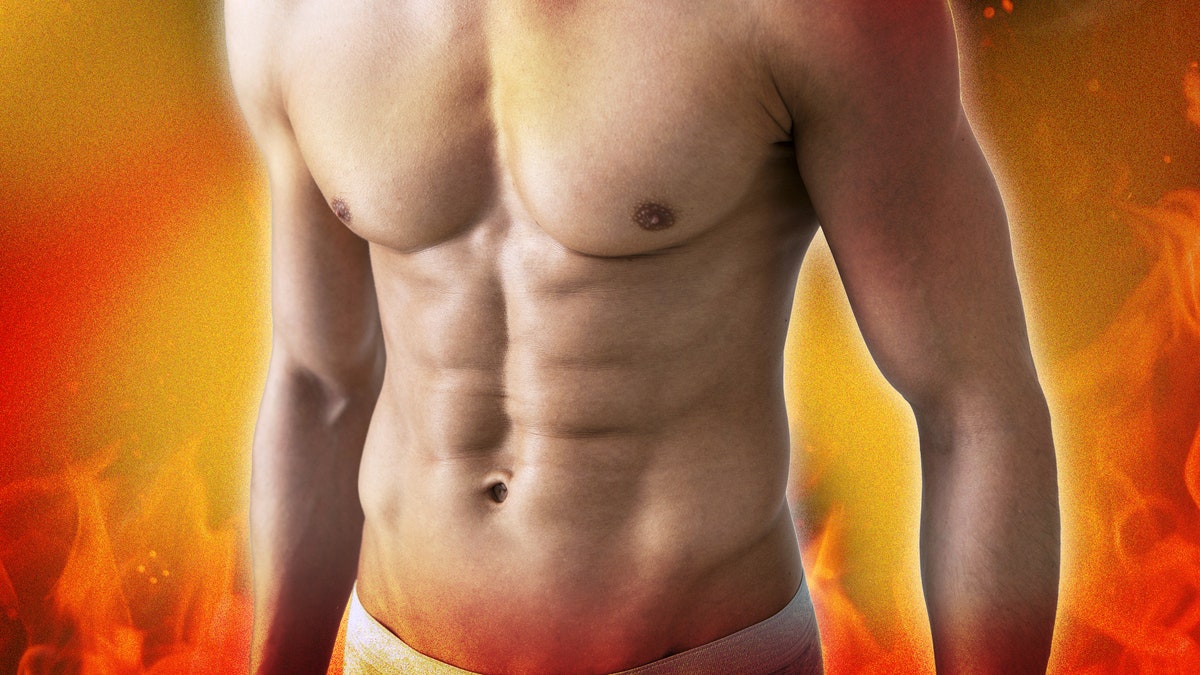Ben McGowan was 33 when he decided to lose weight – or at least some. A former rugby player, he’d previously been slimmer, but fatherhood and lockdown had led to a version of himself he wasn’t happy with. “I was at a crossroads," McGowan tells GQ. "I could go on being out of shape or do something about it.”
In six months, he dropped his body fat percentage from 20 to eight per cent. The goal was a wedding (not his) but, in a sense, it was just a goal. Like a sprinter preparing for the Olympics, he embarked on a phased and monitored programme, the wedding was simply his day in the stadium (in more formal wear). His approach was a model of a healthy, fat-burning programme anyone could follow.
Losing your belly is something of a cult topic, there’s an industry built on magical diets, costly gadgets and tubs of powder. Here, the hope is to offer a more achievable and realistic approach. Spoiler: the words ‘quick’ and ‘easy’ don’t feature much. If you want to shed fat and obtain an athletic physique you are embarking on a journey with a beginning, a fairly lengthy middle and a very tough end.
It says something about the intensity and frequency of Ben’s exercise regime that his trainer Samuel Quinn (personal training lead at Nuffield Health) is now a close friend.
The programme ran like this: first a check to see what injuries might be lurking and how much fitness McGowan was bringing to the project. Once it was established that he was big but basically healthy, knew his way around the gym and was fully committed, he began a series of multiple full-body workouts every week. He worked every body part, lifting in repetitions between 8-10 and did a classic muscle-building and calorie-burn programme with lots of High-Intensity Interval Training alongside. McGowan’s instructions to Quinn were, “I want to go hard. If I puke, I puke.”
Alongside this very demanding daily workout schedule, McGowan had to cut his daily calories. At this stage, he sliced 500 a day from his usual intake. His regime was protein, healthy carbohydrates and lots of vegetables. Saturdays he was allowed a more conventional meal, a cheat meal – importantly this was always measured too and not just an unofficial attempt at the world Jalfrezi record.
McGowan is keen to remind anyone embarking on a similar adventure that a day in the gym doesn’t mean you can forget your daily calorie target. “People think because they burned 600 calories in the gym they can add that to their count. There are no freebies.”
The goal is to burn more calories than you are eating and stimulate the body to use fat stores. The bigger you are, says Quinn the easier it is to lose weight or, essentially fat.
After three or four weeks of these hard workouts, McGowan's body began to adapt to the demands placed on it and the sessions were about to become more comfortable… so Quinn changed them. This was his policy throughout, the training was always hard but never allowed to create a plateau. The rep formats, the type of moves, the tempo of each lift, everything would be altered to make sure Ben’s physique was always making progress and never cruising.
The diet remained very static until the final phase. “I ate the same meals every day for about four months. Yoghourt for breakfast, chicken and vegetables for lunch and 200 grams of minced beef with veg for my evening meal.”
Throughout Quinn tracked McGowan’s changing shape with skin-fold callipers (measuring the fat beneath his skin) and reminded him both of his progress and his goal. The final phase, cutting his body fat (temporarily) to single figures was the toughest mentally and even the smallest luxuries (peanut butter, in this case) were withdrawn.
“My head went, I felt rubbish and I had food cravings.” At this stage Quinn watched him carefully, ensuring rest days were taken when needed and upping his carbohydrates as they drove for the final deadline. McGowan’s advice to others… “Trust the process and remember that it does end.” McGowan remains lean and athletic but at a more sustainable level. However, he now knows how to achieve that very lean look when needed.
Healthy weight loss is also the dominant theme of Luke McCabe’s transformation. McCabe trained at Roar Fitness in London where he lost around 10kg and halved his fat level. Sarah Lindsay (Roar founder and former Olympian speed skater) says, “Losing fat needs a mind shift, don’t eat to lose fat, don’t exercise to lose fat – focus on building muscle in the gym, which means focusing on performance. How much can you lift? How many reps can you do? A more positive mindset.”
Instagram content
This content can also be viewed on the site it originates from.
While McCabe doesn't share as much detail as McGowan about his journey to lose weight healthily, what he does say is just as valuable. For him, his turnaround was all about sticking to the plan while the rest of life swirls around you. “I had had a few life-changing things going on with moving and break-ups like everyone does, but this proved to me that if you keep your head straight and have an end goal you can always make it.”
The message is consistent, steady gym work and adherence to a tight nutrition plan tend to outplay any Keto, Caveman, five:three or melon juice gimmickry. Fat loss is no longer assumed to be everyone’s goal and the way society treats bigger people is happily changing but it’s good know that if you do want to change, there is only time and a lot of heavy weights between you and the body you want.


